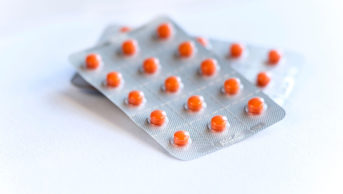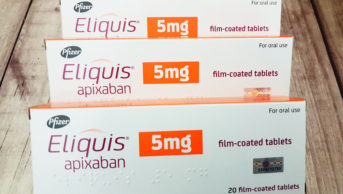
Shutterstock.com
The NHS is saving nearly £300 per patient on oral anticoagulation for atrial fibrillation (AF), despite rising prescription costs for the medicine, owing to a decline in AF-related strokes, a study in Heart has found.
Researchers found that the number of patients receiving oral anticoagulation for AF increased by more than one million between 2011–2014 and 2014–2017, equating to costs of more than £733 million.
However, the incidence of AF-related stroke fell by 11.3% during this time, saving £289 on oral anticoagulation per patient.
To calculate these figures, the researchers gathered data on AF prevalence, AF-related stroke incidence and prescribing for all NHS general practices and hospitals.
They compared changes in oral anticoagulation prescribing, including warfarin and direct oral anticoagulants (DOACs), incidence of hospitalised AF-related stroke and associated overall and per-patient costs, within the periods January 2011 to June 2014 and July 2014 to December 2017.
The researchers found that between the two time periods, the number of people receiving oral anticoagulation for AF increased by 86.5%, from 1,381,170 to 2,575,669. The number of patients prescribed warfarin increased by just 16.1%, while the number prescribed DOACs increased 1,452.7%.
Overall, oral anticoagulation prescription costs rose by 781.2%, from £87,313,310 to £769,444,028, and per patient by 50.7%, from £293 to £442.
However, as AF-related stroke incidence fell by 11.3%, from 86,467 patients in 2011–2014 to 76,730 in 2014–2017, with adjustment for AF prevalence, the overall per-patient cost reduced from £1,129 to £840; a difference of £289.
The researchers said that the “substantial budget impact” calculated in relation to DOAC prescribing was “an important consideration for healthcare services”.
“Not only are more patients with AF being treated, but also adoption of the CHA2DS2 –VASc score has broadened the threshold for identification of patients with AF at high risk of stroke and extended the pool eligible to receive oral anticoagulation,” they added.
Paul Wright, lead cardiac pharmacist at Barts Health NHS Trust, said it was “pleasing” to see improvements being made in anticoagulation prescribing for those with AF, which, he added, was a national priority in the NHS Long Term Plan.
“As demonstrated with the most recent QoF [Quality Outcomes Framework] data (2019/2020), anticoagulation prescribing in AF in those with a CHA2DS2-VASc is 87% for England. There is still ongoing work but [it is] looking likely that the target set within the 10-year plan of 90% will be met by 2029.”
Wright said it was therefore “likely” that the findings from the paper may have underestimated potential savings as it was possible that stroke incidence would be further reduced with increased anticoagulation prescribing.
However, he said that “significant improvements” were still needed in improving detection as a high proportion of AF cases are only detected after a stroke.
“Perhaps now more than ever, due to reduced patient contact with healthcare professionals during the COVID pandemic, the role for pharmacists to support opportunistic screening, such as when patients come for flu vaccinations, is a key role that the profession can undertake to support improving AF detection,” he said.
You may also be interested in

NHS England recommends generic apixaban over edoxaban for treatment of atrial fibrillation

Deprivation and ethnicity linked with lower anticoagulation prescribing for atrial fibrillation, study reveals
